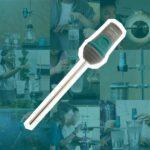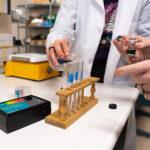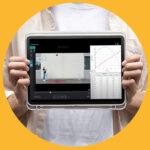
Sharing ideas and inspiration for engagement, inclusion, and excellence in STEM
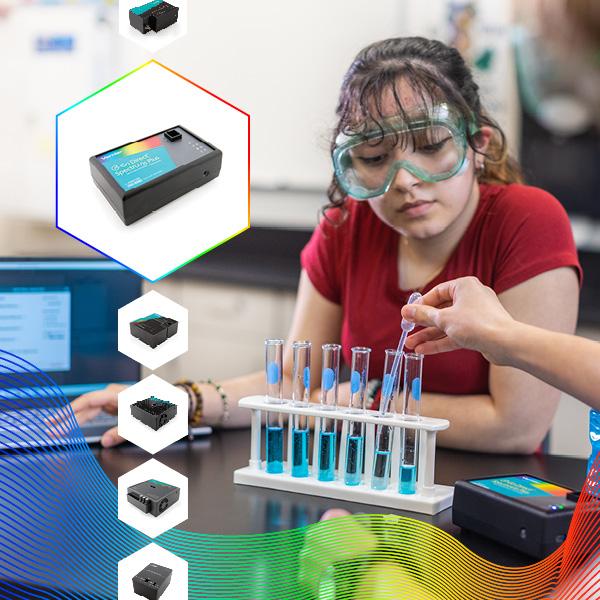
Spectrometers are a great tool for helping your students explore important scientific concepts across a range of biology, chemistry, and physics courses—and Vernier offers a suite of spectrometers that are fast, compact, and easy to use.
But with so many options available, how do you know which spectrometer is right for you? It boils down to one thing: What is your application?
Once you answer this question, you can establish a baseline that will help you identify the spectrometer that will best meet your needs and the needs of your students.
A good rule of thumb is that the more complex your application, the more advanced your spectrometer will need to be.
Some common applications include the following:
- Measure the absorbance of visibly colored samples, such as food coloring or crystal violet (often used to introduce students to spectroscopy).
- Measure the absorbance of clear samples, such as caffeine or proteins (often used in biology, biochemistry, and organic chemistry courses).
- Measure samples that fluoresce, such as olive oil or quinine (often used in biology, biochemistry, forensics, and food chemistry courses).
- Measure samples that emit visible light, such as flame tests and LEDs (often used in physics and chemistry courses).
When it comes to the Vernier suite of spectrometers, it’s helpful to know the different applications for which they are best suited—as well as the ways they are alike.
In terms of similarities, with all of our spectrometers, data can be collected and analyzed using LabQuest® 2, LabQuest 3, or our free Vernier Spectral Analysis® software, which allows users to spend less time learning different interfaces and more time in the laboratory.
Additionally, all of our spectrometers do the same types of data collection:
- Full spectrum analysis of samples in seconds
- Beer’s law analysis (e.g., absorbance vs. concentration)
- Kinetics experiments (e.g., absorbance vs. time)
Here is a high-level overview of the different applications for each of our spectrometers.
1. Go Direct® SpectroVis® Plus Spectrophotometer

This spectrometer is best for high school, Advanced Placement (AP), International Baccalaureate (IB), and first-year college courses. Its applications run the gamut in terms of the basics. Examples include
- Determine the concentration of an unknown with various samples, such as food coloring and sports drinks.
- Investigate chemical kinetics of samples, such as crystal violet and food coloring.
- Learn about fluorescence with chlorophyll and fluorescein.
- Learn about emissions with gas discharge tubes and flame tests.
2. Go Direct Visible Spectrophotometer
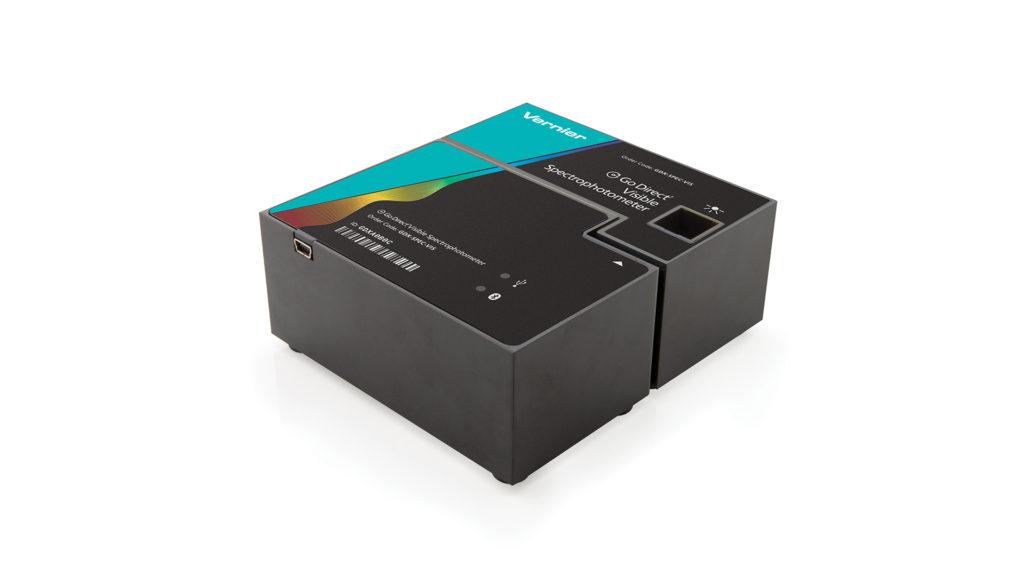
This spectrometer is best for AP, IB, and college courses—as well as applications that require higher accuracy. It is a great option for the basics, as well as more complex applications. Examples include
- Investigate chemical kinetics of samples with improved temperature control (thanks to its aluminum housing).
- Learn about emissions with gas discharge tubes and flame tests (two pieces).
3. Go Direct UV-VIS Spectrophotometer
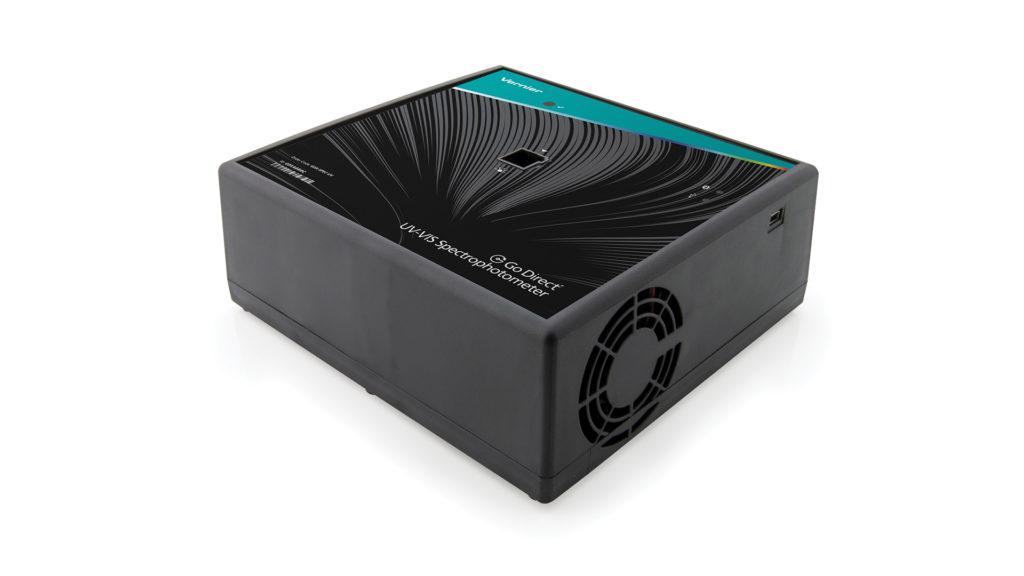
This spectrometer is best for organic chemistry, biochemistry, and physical chemistry courses. Like the Go Direct SpectroVis Plus Spectrophotometer, it does an excellent job with the basics. It can also handle even more complex applications than the Go Direct Visible Spectrophotometer. Examples include
- Determine the concentration of an unknown with various samples, such as aspirin, DNA, and protein.
- Investigate chemical kinetics of proteins and enzyme assays.
4. Go Direct Fluorescence/UV-VIS Spectrophotometer
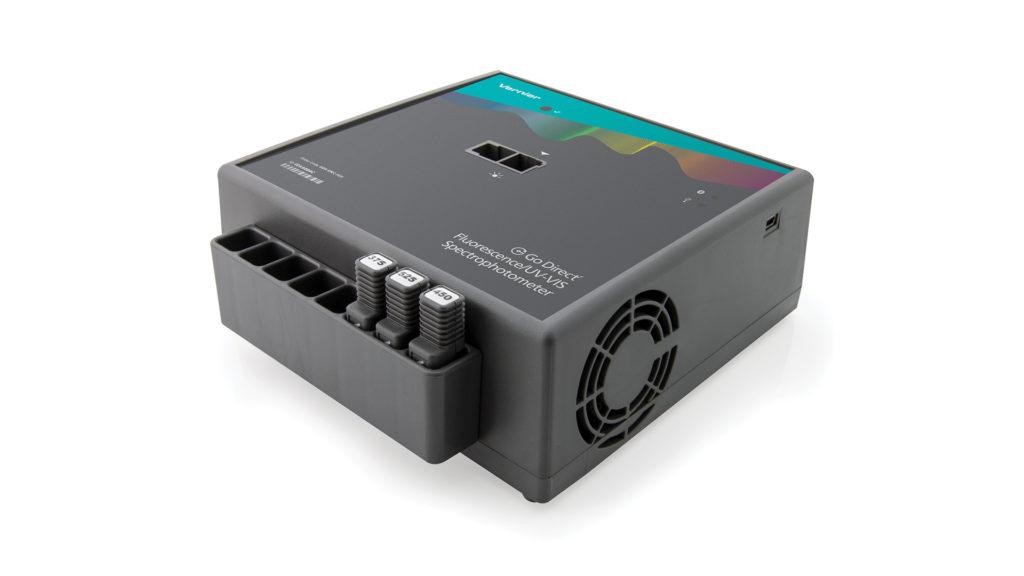
This spectrometer is best for organic chemistry, biochemistry, and physical chemistry courses, as well as instrumental analysis applications. It is a terrific option for the basics—and for complex applications, including those that involve fluorescence. Examples include
- Determine the concentration of an unknown with various samples, such as quinine, DAPI, GFP, and tryptophan.
- Investigate chemical kinetics of proteins and enzyme assays.
- Learn about Stokes shift.
- Learn about quantum yield.
- Conduct quenching studies.
5. Go Direct Emissions Spectrometer
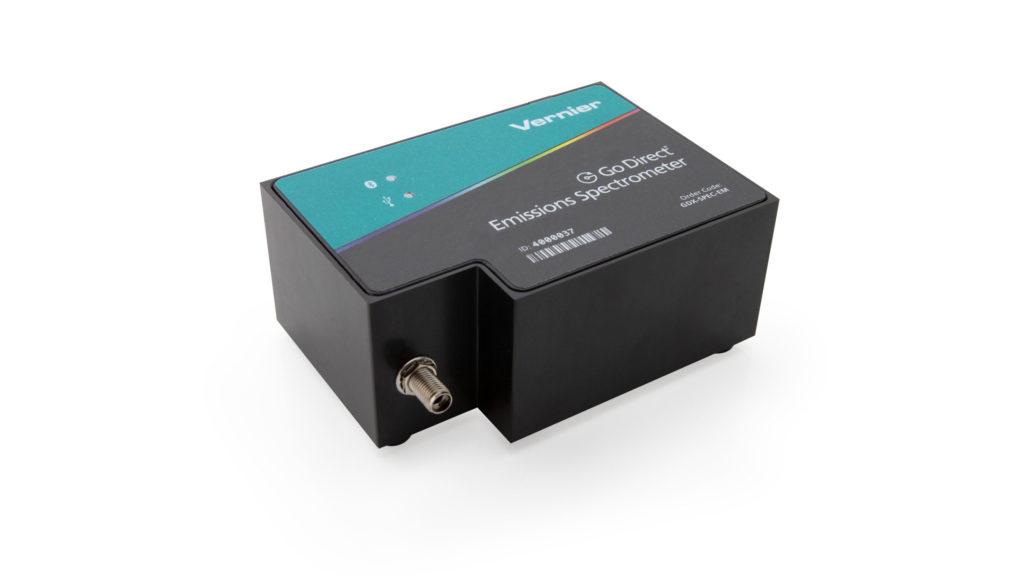
This specialty spectrometer is best for high school, AP, IB, and college courses. Common experiments you can conduct with the Go Direct Emissions Spectrometer include
- Investigate full-spectrum emissions from light bulbs, LEDs, and gas discharge tubes.
- Investigate atomic hydrogen and Planck’s constant.
6. Vernier Flash Photolysis Spectrometer
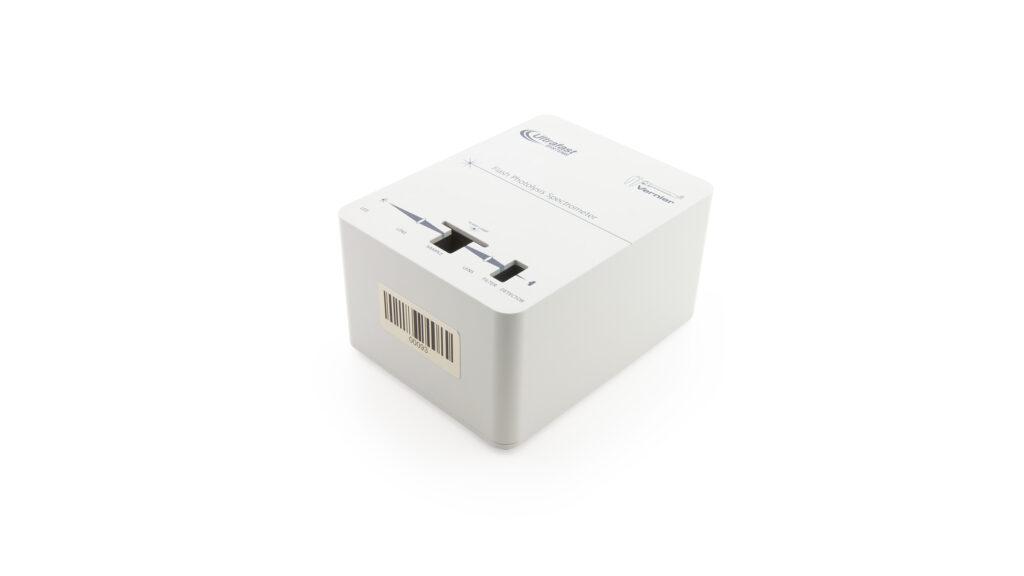
This specialty spectrometer is best for college courses, including physical chemistry, and instrumental analysis applications. Common experiments you can conduct with the Vernier Flash Photolysis Spectrometer include
- Investigate fast, photo-catalyzed reactions.
- Investigate absorption and emission changes of a photoexcited sample over time.
- Investigate excited-state dynamics of photo switches, triplet-decay analysis, isomerization, and photocatalysis.
Want to take a deeper dive into the Vernier suite of spectrometers and each instrument’s applications? Check out Ask Me Anything: Selecting the Right Spectrometer for You.
In this webinar, Nüsret Hisim and I discuss the differences among the range of spectrometers Vernier offers—as well as laboratory applications, software capabilities, and data-collection modes that work best for each spectrometer.
And we are always happy to answer your questions about our suite of spectrometers! Feel free to contact us at chemistry@vernier.com or 888-837-6437.
Share this Article

Sign up for our newsletter
Stay in the loop! Beyond Measure delivers monthly updates on the latest news, ideas, and STEM resources from Vernier.

